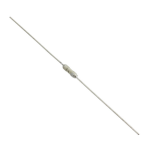Here’s a challenge for the VAF brain trust! What might cause the ammeter to intermittently cycle during flight? I have tested the alternator which has an internal voltage regulator, it checks out. When the ammeter cycles, it is mostly going negative amps, sometimes off scale. During these events, the voltage on both busses remains steady at 14. Normal operation the ammeter shows charging (positive) immediately after engine start, then shortly thereafter makes its way to 0. On my last test, once it approached 0, it started a fairly wild cyclic going negative and approaching 0. bTW, the ammeter is from the GEA24 hooked to a G3X display.


